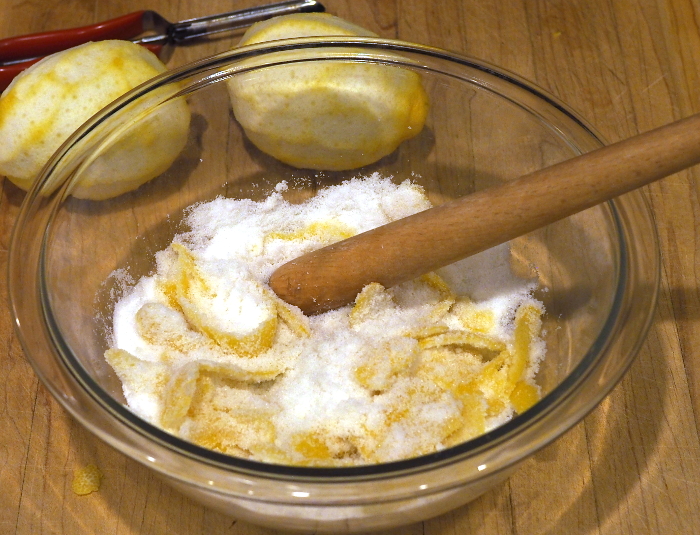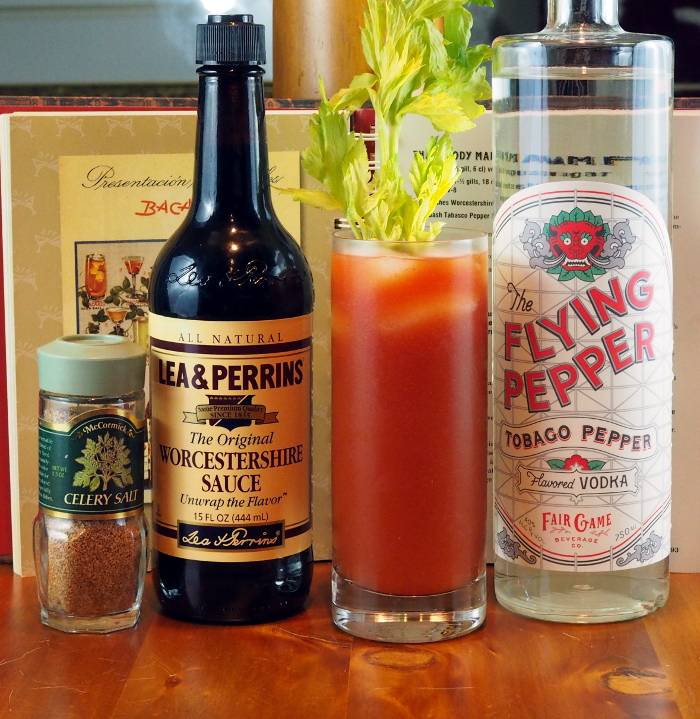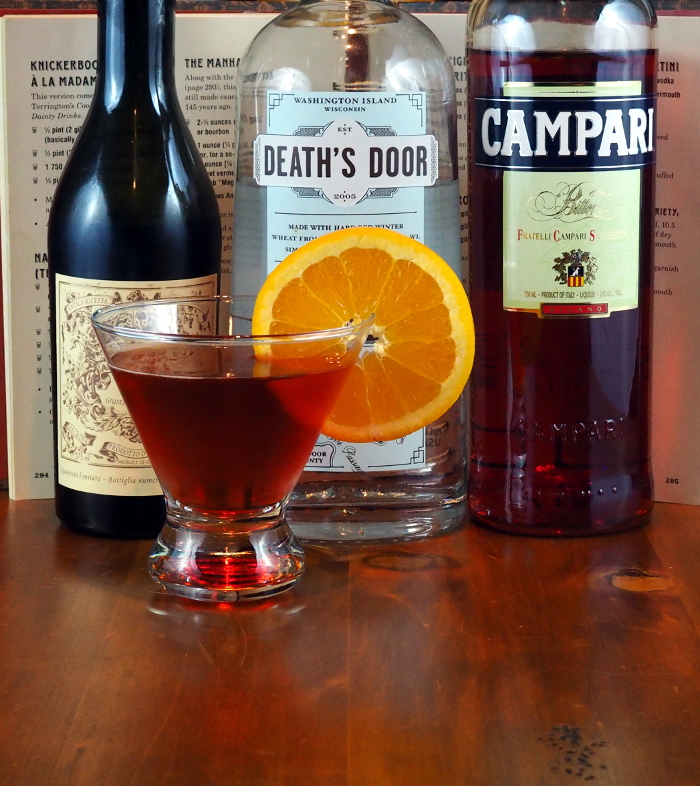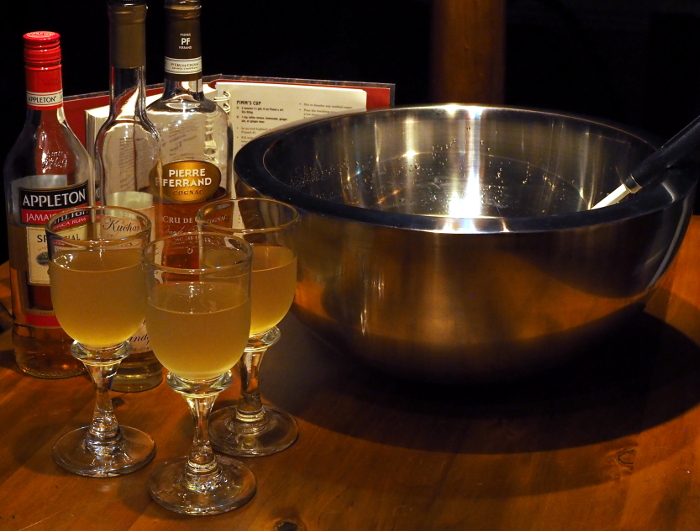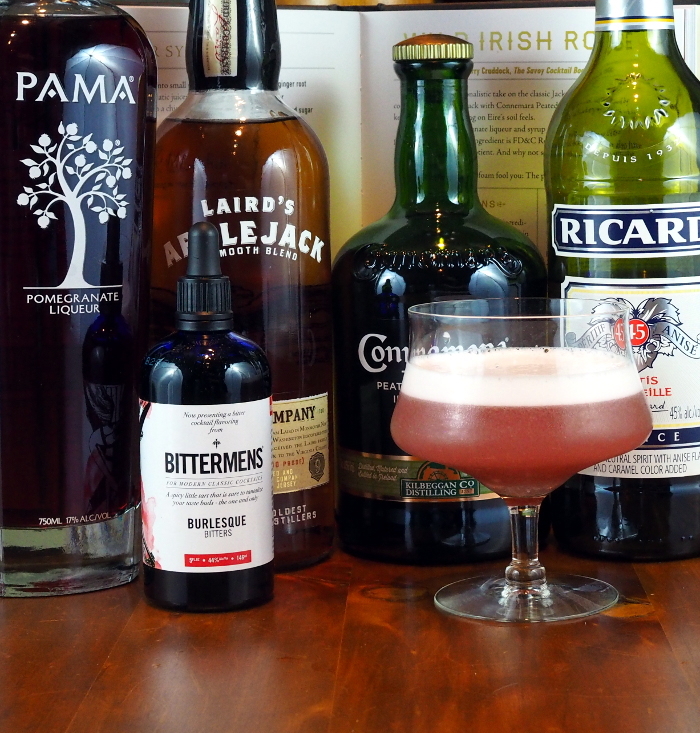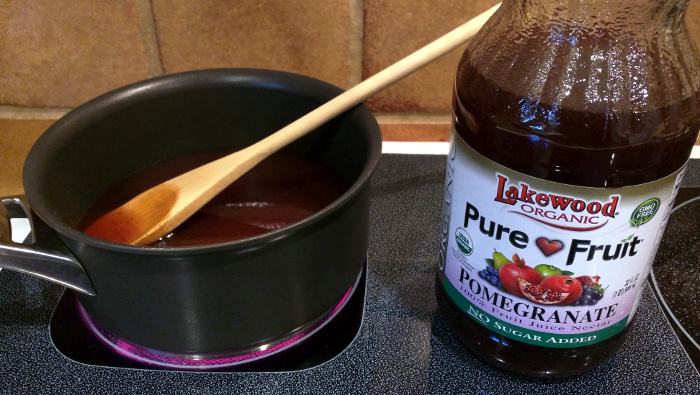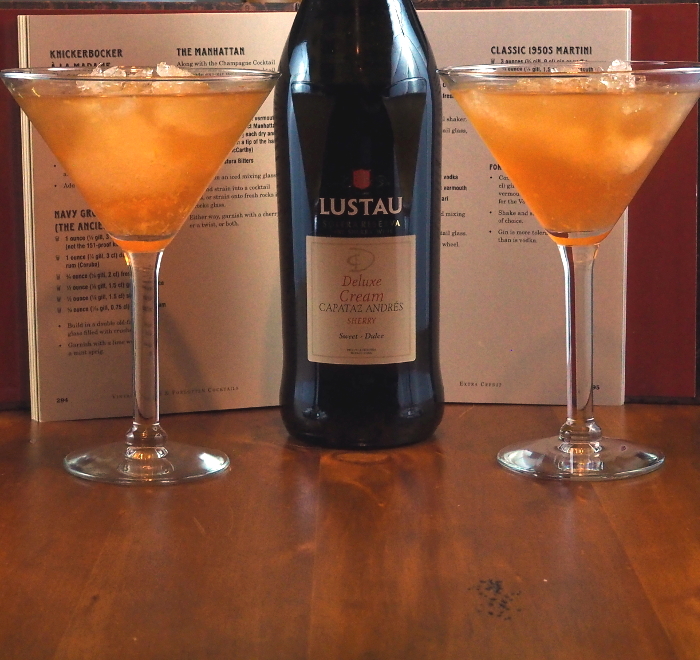The Dead Rabbit version of the Straits Sling:
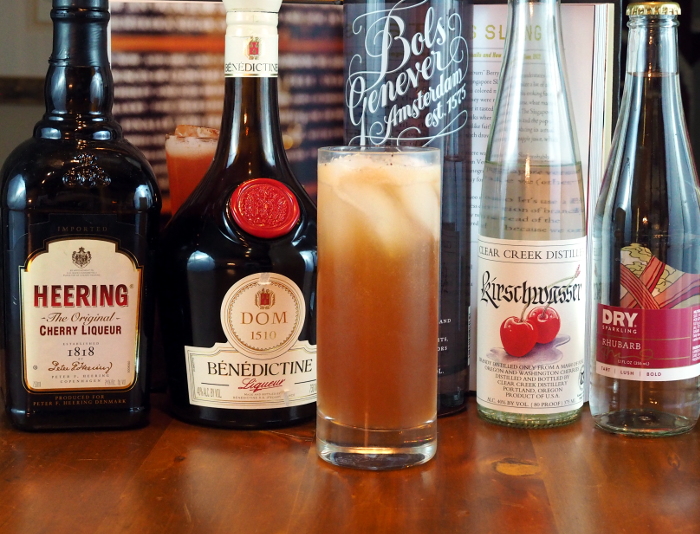
Add all the ingredients, except the soda and garnish, to a shaker. Fill with ice and shake. Strain into an ice filled tall glass. Add the soda and garnish with freshly grated nutmeg.
- 0.50 ounce Lemon Sherbet
- 1.50 ounces Bols Genever gin
- 0.50 ounce Cherry Herring
- 0.50 ounce Benedictine
- 0.50 ounce kirsch eau de vie
- 0.75 ounce fresh lemon juice
- 3 dashes Dead Rabbit Orinoco Bitters or Angostura Aromatic Bitters
- 1.50 ounces rhubarb soda
- Fresh nutmeg, grated, for garnish
This is my second recipe from the Dead Rabbit Drinks Manual, which is more a book of alchemy than recipes.
I’ve been blogging about vintage cocktails for over two years now, and in that time I’ve amassed one of the best collections of spirits and ingredients to make them in the area. Yet I was on page 119 of this book before I found a cocktail I could make, the Wild Irish Rose. That cocktail was based on one of my least favorite cocktails ever, the Jack Rose, but it was tasty when done their way, so I was looking forward to this one. I needed to secure Bols Genever gin which I was able to buy on a trip to Reno at Total Wino.
The Straits Sling is the forerunner to the Singapore Sling, one of my favorite cocktails when done right. Dead Rabbit adds cherry brandy to the drink as well as their “Lemon Sherbet” which adds a really nice tart/sweet accent, and for the soda they recommend a flavored soda since “we only have so much time to spend on this planet”. They also garnish pretty much everything with freshly grated nutmeg. I can’t imagine what the bin of nutmeg seeds looks like at their place. If you have a jar of grated nutmeg, throw it out. Nutmeg works best grated fresh and it is easy with a microplane grater.
How does it taste? Outstanding.
I drank two (note to self, finish making dinner before starting on the second one) and made another one for Andrea. She liked it a lot as well, although her first question was why there was black pepper on top of it. (grin)
Rating: 5/5 – I’d almost give it a 5+ if I did such things.
Notes: As with most Dead Rabbit recipes, I try hard to source their recommended brands. I used Clear Creek kirschwasser and I bought a rhubarb soda from Dry via Amazon. I used Angostura bitters since my Orinoco bitters have been delayed in shipment.

